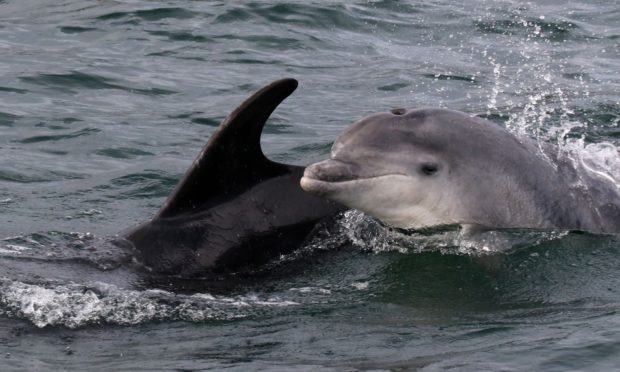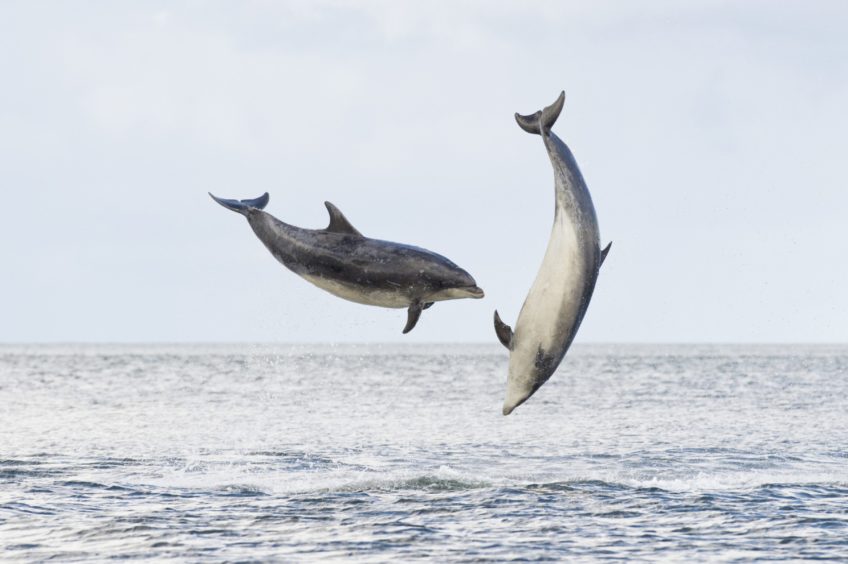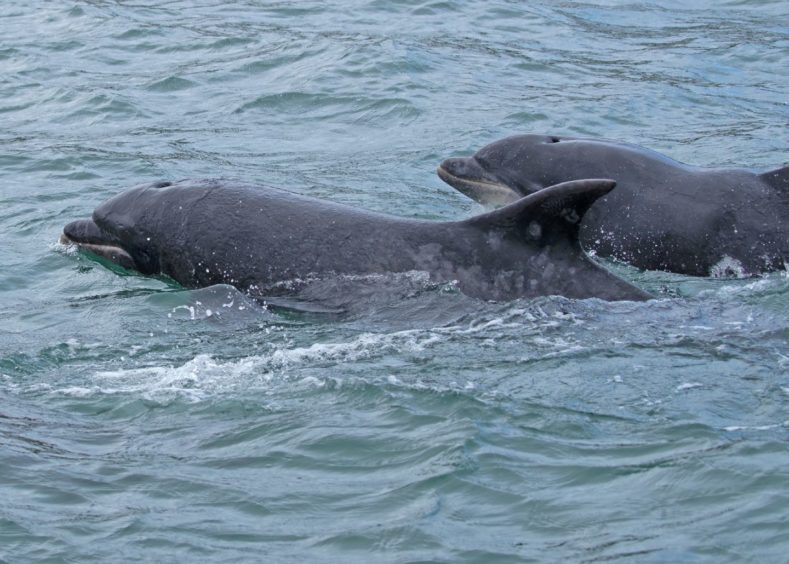I came more out of hope than expectation, and on initially scanning the sea off Aberdeen harbour, it was strangely devoid of life, with there being only a small group of cormorants resting on the southern breakwater and a handful of herring gulls wheeling in the sky.
I am used to inauspicious starts when searching for wildlife, and was in no mood to concede, because this small carpark by the fortified ancient monument of the Torry Battery is one of the best places in Scotland to observe bottlenose dolphins.
The search would need to be intensified, so, I descended some steps towards the shore of the outer harbour basin.
Halfway down, I paused and swept the sea once more with binoculars.
For late spring, it was bitterly cold with a northerly breeze and blustery rain showers swirling intermittently in from the steely North Sea.
Every dark wave-crest momentarily sparked an imaginary vision of a rolling dolphin fin, only for the tumbling shadowy peak of the surge to dissipate into grey ocean once more.
Perseverance
The undulating sea was playing tricks on the mind; it is so much easier spotting dolphins when the water is calm.
I persevered and looked once more, and this time a dark fin and an arched back perceptibly broke the water, and then did so again.
This was no dreamy vision, but an actual dolphin, which briefly surfaced several times more.
It was quite far offshore, gambolling in the water close to an anchored offshore oil-support vessel.
Further scrutiny with my binoculars soon revealed several other dolphins, which were swimming either in pairs or singly, rather than as one large group.
Dolphins in Aberdeen harbour
The mouth of Aberdeen harbour, where the River Dee spills out into the sea, is attractive to dolphins because of migrating salmon and sea trout funnelling into the port entrance.
Smolts – which are young salmon leaving the river in April and May to embark upon their oceanic wanderings – are also eagerly devoured.
Dolphins occur off Aberdeen harbour all year round, although the best months to spot them are April, May, June, and July, and it is not unusual for bottlenoses to feed and play close to the two breakwaters.
Rather than feeding, the bottlenoses I had just encountered were probably lingering offshore to wait for the optimum tidal conditions which would encourage salmon to start moving into the Dee (or exiting the river in the case of smolts), at which time they would move in closer to the harbour entrance.
The magic of Aberdeen dolphins
As such, the presence of dolphins is not always immediately obvious to casual observers and using binoculars and regularly scanning the sea offshore will dramatically increase the chances of detecting them.
Although marine mammals such as harbour seals are declining in Scotland, I find it inspirational that dolphins are prospering close to one of Scotland’s major cities.
Now, whenever I visit Aberdeen, the harbour mouth is where I am always drawn to, relishing the opportunity to catch a glimpse of one of our most special creatures.
Info
Scotland holds the most northerly resident populations of bottlenose dolphins in the world. There are around 200 bottlenoses in eastern Scotland, with a further 50 resident around the Hebrides.












